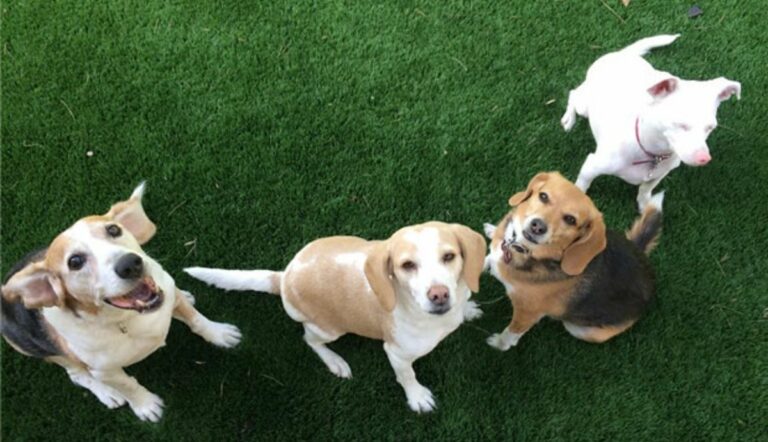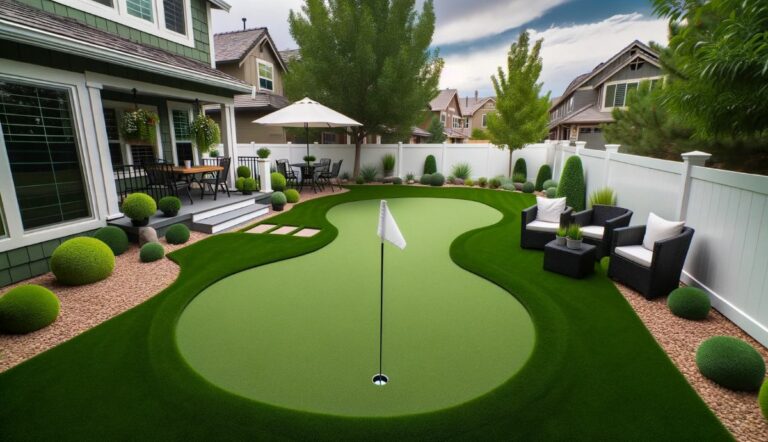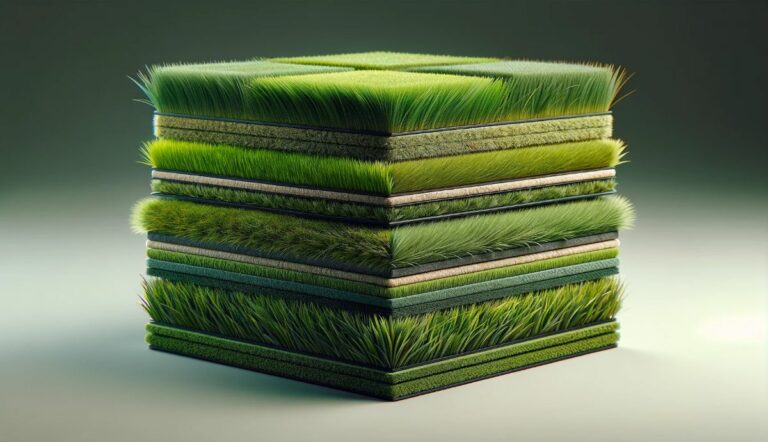Comprehensive Guide to Artificial Grass Pricing in 2024
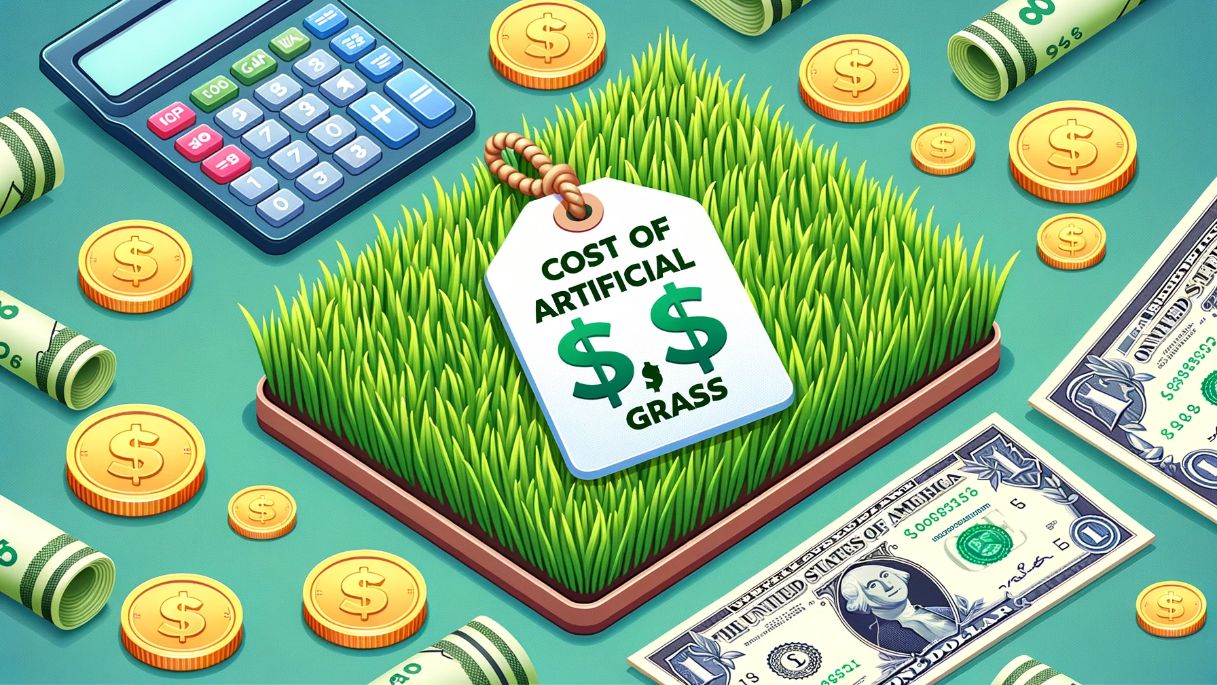
Artificial grass, also known as synthetic or fake grass, is an increasingly popular choice for homeowners across the United States. With artificial grass pricing typically ranges from $5 – $20 per square foot depending on the quality and other factors. Ai Turf partners typically only offer high-quality artificial grass including installation costs ranging from $10 to $20 per square foot.
Cost estimate for Artificial grass installations depending on yard size:
- Small Lawns (Around 500 sq ft): The cost for smaller lawns is estimated to range from $5,000 to $10,000.
- Medium Lawns (Approximately 1,000 sq ft): For medium-sized lawns, homeowners might expect costs from $10,000 to $20,000.
- Large Lawns (About 1,500 sq ft): Installing artificial grass on larger lawns could cost between $15,000 and $30,000.
The final cost will vary depending on the installation’s complexity, the specific type of artificial grass chosen, and any additional landscaping features desired.
Contact Ai Turf today for a personalized quote from the vetted partner in your area!
Cost Comparison: Artificial Grass vs Natural Grass by Ai Turf
Initial Installation Costs:
- Artificial Grass: The initial cost for installing Ai Turf’s artificial grass is now in the range of $10 to $20 per square foot. For a 1,000-square-foot yard, this means the total cost could be between $10,000 and $20,000. This price includes both the artificial grass material and the labor for installation.
- Natural Grass: In comparison, installing sod for the same 1,000-square-foot yard typically costs between $2 and $4 per square foot, amounting to $2,000 to $4,000. If you choose to plant grass seeds, the cost might be reduced to approximately $300.
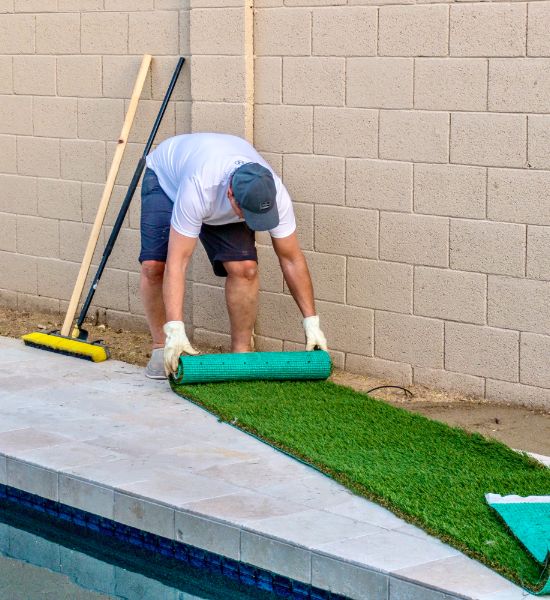
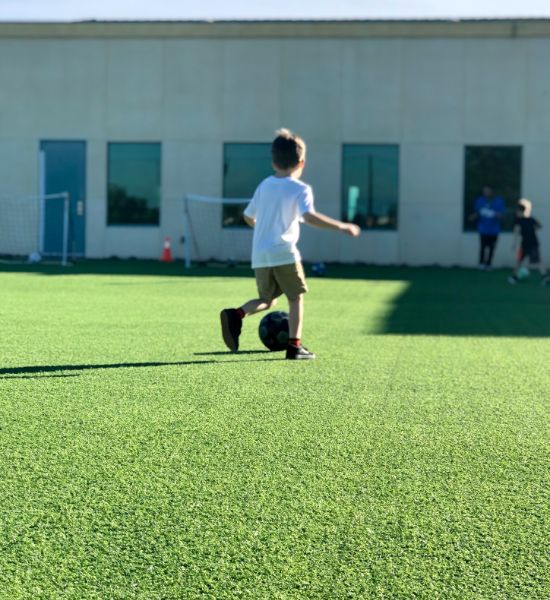
Maintenance Costs of Artificial Grass vs Natural Grass:
- Artificial Grass: Ai Turf’s artificial grass requires minimal maintenance after installation. There’s no need for regular watering, mowing, or fertilizing. Occasional cleaning might cost about $30 – 60 per month.
- Natural Grass: Maintaining natural grass, on the other hand, requires consistent watering, mowing, fertilizing, and weed control. In the USA, the average monthly maintenance cost can be around $150 – $300.
Environmental and Financial Impacts:
- Artificial Grass: Ai Turf’s synthetic grass is an excellent option for water conservation, especially in regions like Colorado, Nevada, and California where water use is a concern. It doesn’t require pesticides or fertilizers, reducing its environmental impact.
- Natural Grass: While natural grass contributes to the carbon cycle, it demands regular watering and the use of fertilizers and pesticides, which can negatively affect the environment.
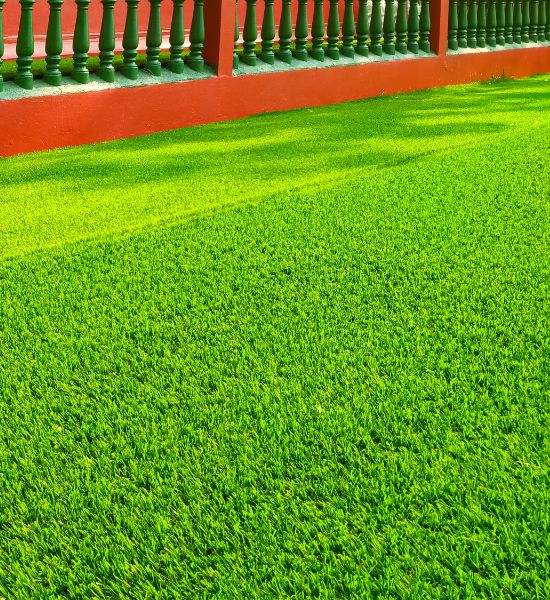
Artificial Grass vs Natural Sod Cost over 10-years
| Cost Category | Artificial Grass (1,000 sq ft) | Sod (1,000 sq ft) |
| Initial Installation | ||
| Installation Cost | $13,500 (at $13.50/sq ft) | $3,000 (at $3.00/sq ft) |
| Annual Maintenance | ||
| Watering | $0 | $200/year |
| Fertilizing | $0 | $250/year |
| Lawn Services | $500/year | $1,800/year |
| First Year Total | $14,000 | $5,250 |
| Additional Cost Per Year | $500 | ~$2,250 |
| Total Spent after 3 Years | $15,000 | $9,750 |
| Total Spent after 5 Years | $16,000 | $16,000 |
| Total Spent after 7 Years | $17,000 | $22,250 |
| Total Spent after 10 Years | $19,000 | $32,250 |
Overall, although the upfront cost of installing artificial grass might be higher than that of natural grass, it is more cost-effective and environmentally friendly in the long term, thanks to its lower maintenance needs and reduced environmental impact.
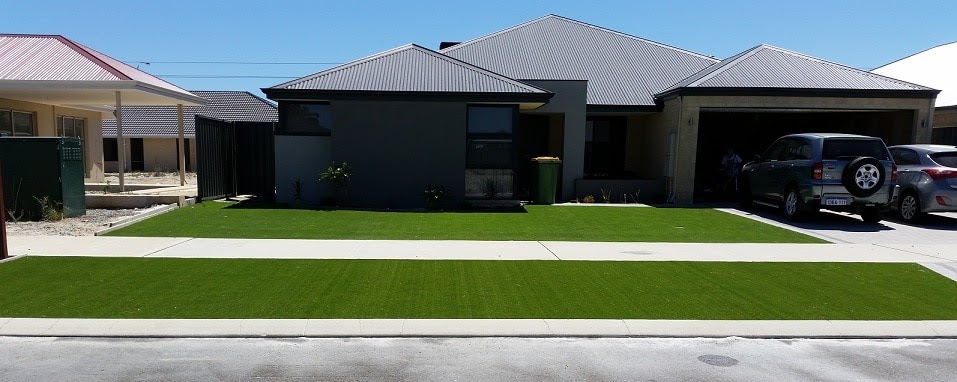
Cost of Different Types of Artificial Grass
Each type of artificial grass material varies in quality and price. The higher the quality, the higher the cost. Be wary of low-cost turf, as it might not always meet desired quality standards.
Average Cost per Square Foot:
- Polypropylene: $2.10 to $7.40
- Polyethylene: $2.80 to $4.20
- Nylon: $5.60 to $6.40
Details of Each Type:
Polypropylene
- Least durable of the three.
- Best for low-traffic areas or indoor use.
- Costs range from $2.10 to $7.40 per square foot.
- Ideal for shady areas or indoor settings.
- Pros: Often lower in cost, suitable for decorative indoor grass, works well in shaded areas.
- Cons: Not ideal for backyards, less heat resistant, not suited for heavy foot traffic.
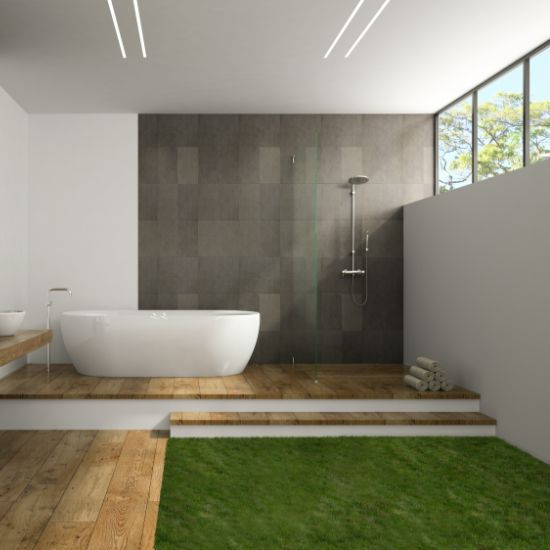
Polyethylene
- Closer in appearance and feel to natural grass.
- More durable than polypropylene.
- Priced between $2.80 to $4.20 per square foot.
- Suitable for backyards, front yards, and pet areas.
- Pros: Realistic look, soft texture, more durable than polypropylene, non-absorbent with good drainage.
- Cons: Not as durable as nylon, though some high-quality options are nearly as durable.
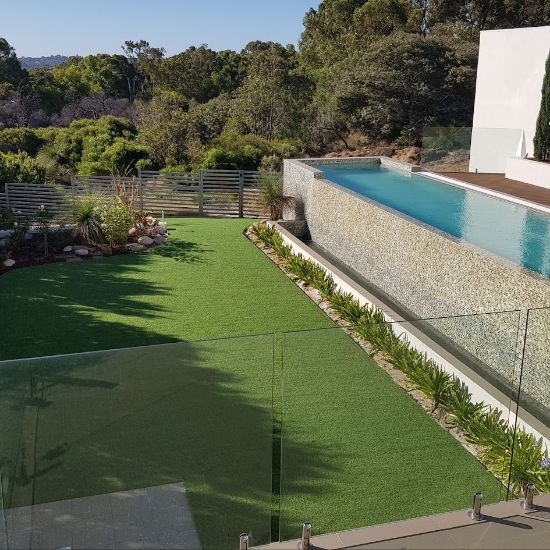
Nylon
- Most durable and highest-priced.
- Prices range from $5.60 to $6.40 per square foot.
- Perfect for sports fields or areas with heavy foot traffic.
- Pros: Highly durable, withstands heavy traffic and high temperatures, excellent for sports fields.
- Cons: More expensive, can be stiffer compared to other types.
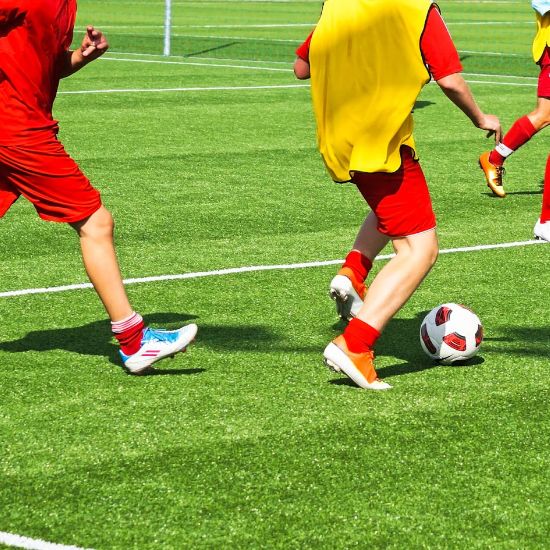
These prices serve as a guide for planning your artificial turf project with Ai Turf. The actual costs may vary based on specific project needs, requirements, brand and veriety.
Factors Influencing the Price of Artificial Grass
Quality of Artificial Grass:
- Price is heavily influenced by the grass’s quality.
- Higher-quality grass typically looks and feels more realistic.
- Premium options offer greater durability and a longer lifespan.
Size of the Area:
- The installation cost varies with the size of the area.
- Larger spaces require more materials and labor, increasing the overall price.
Labor Costs for Installation:
- Labor costs depend on the complexity and scope of the installation project.
- Skilled labor needed for proper installation can vary regionally.
Cost of Materials for Underlay and Area Preparation:
- This includes expenses for materials like underlay, leveling agents, and other preparation supplies.
- Costs can vary depending on the condition of the existing space and the type of materials used.
Maintenance and Lifespan:
- Artificial grass typically demands less maintenance compared to natural grass.
- Costs for maintenance, including occasional cleaning and infill replenishment, can accumulate over time.
- Investing in high-quality artificial grass can lower these maintenance costs and further extend the turf’s lifespan
Regional Variations:
- Prices can vary regionally based on local market conditions and availability of materials.
- Environmental factors, such as climate, can also influence the type of artificial turf best suited for a specific region.
In diverse climates like those found across the USA, choosing high-quality artificial grass from Ai Turf partners ensures a durable and visually appealing solution for any lawn or outdoor area.
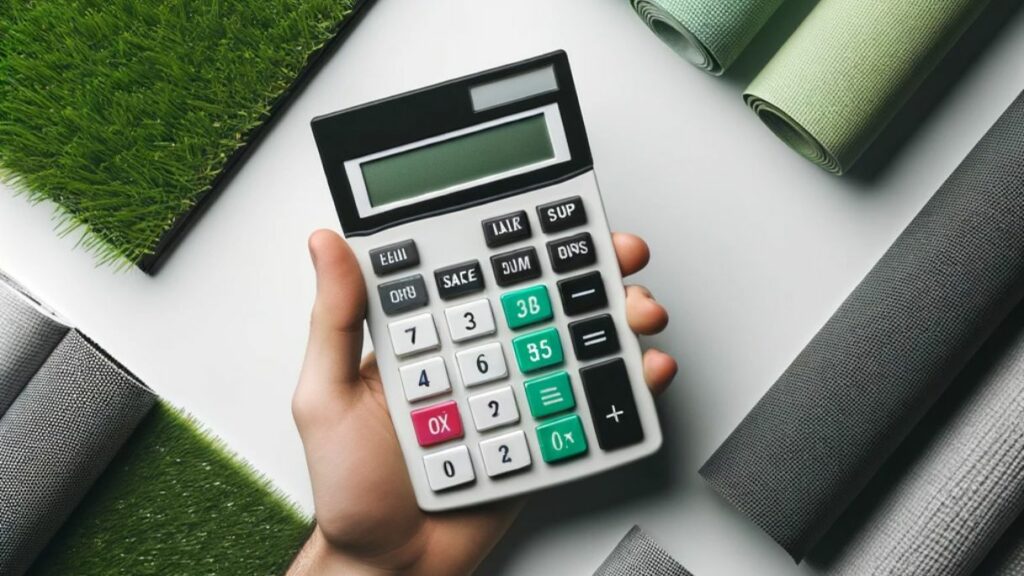
Considerations for Extra Costs with Artificial Grass
When planning to install artificial grass, it’s crucial to account for all possible additional expenses. These may include:
Ground Preparation Costs
Proper preparation of the ground is essential before laying down your artificial turf to ensure an even surface. This might involve:
- Conducting soil tests to check if any adjustments are needed.
- Leveling the ground for uniformity.
- Clearing existing grass or weeds.
Costs for Installation Materials
The installation process may require certain accessories, which include:
- Adhesives for securing the turf’s seams and edges.
- Infill materials to support the blades of the grass and add cushioning.
- Staples or nails to anchor the turf properly.
Expenses for Optional Add-Ons
You may also want to consider optional enhancements, such as:
- Special infill designed for pet-friendly areas.
- Extra padding for areas where children play.
- Landscaping details like borders or stepping stones.
Alex’s Artificial Grass Installation in Los Angeles:
Los Angeles homeowner, Alex, decided to install artificial grass in their 800 square-foot backyard. The project involved several additional costs:
- Ground Preparation Costs: Alex’s backyard was uneven and had some old, patchy grass. The ground preparation involved leveling the area and removing the old grass. This required additional labor and equipment, adding to the overall cost.
- Costs for Installation Materials: To install the artificial grass, specific materials are needed. Alex opted for high-quality adhesives to ensure the turf edges are securely bonded. They also choose a premium infill that not only supports the grass blades for a natural look but also provides extra cushioning, enhancing the safety and comfort of the turf.
- Expenses for Optional Add-Ons: Alex wanted the backyard to be pet-friendly and safe for children. They decided to add a specialized pet-friendly infill to neutralize odors and facilitate easy cleaning. For the children’s play area, they incorporated additional padding underneath the turf for extra safety. They also decided to add some aesthetic landscaping features, like decorative borders around the turf.
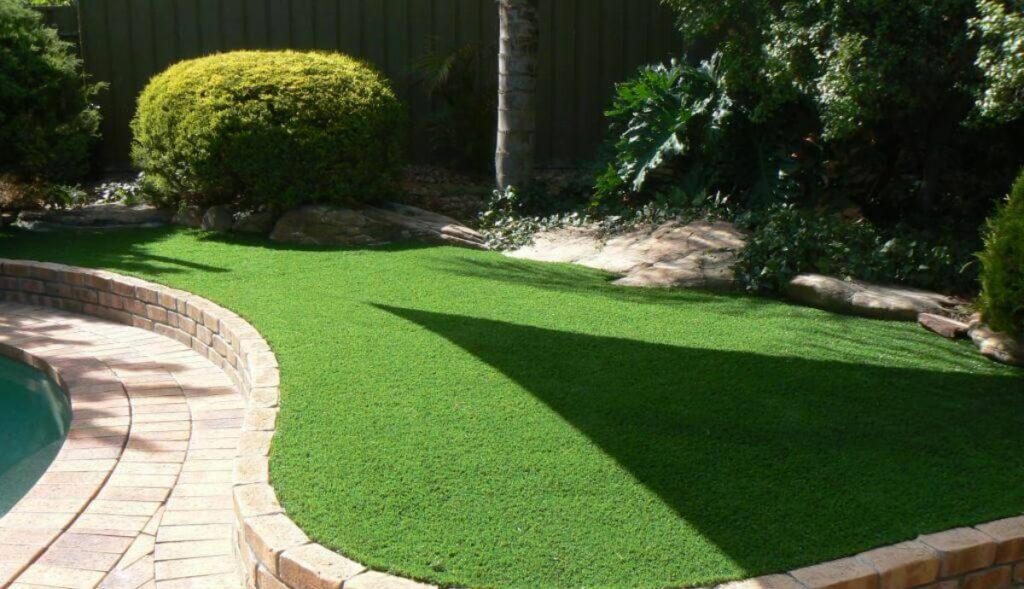
Long-Term Savings of Artificial Grass
Artificial grass represents a notable initial investment, but the long-term financial benefits are substantial. Here are key areas where you can expect significant savings:
Reduced Water Bills:
- Artificial grass eliminates the need for watering, which is a major expense for natural lawns, particularly in arid regions.
- For example, a natural lawn might consume up to 12 gallons of water per square yard each week. In contrast, artificial turf requires no water, potentially cutting your water bills by as much as 70%.
Lower Maintenance Costs:
- The cost and effort of maintaining a natural lawn include regular mowing, trimming, fertilizing, and pest control, which can be substantial.
- With artificial grass, these expenses are virtually eliminated, reducing ongoing maintenance costs to a fraction of those for natural grass.
Durability and Longevity:
- Artificial grass is engineered to withstand harsh weather conditions, from extreme heat to cold winters, without needing to be replaced or returned as frequently as natural grass.
- High-quality artificial grass can last between 15 to 20 years, while natural lawns typically require re-turfing every 5 to 7 years.
Cost Savings Over Time:
- Considering the lifespan of artificial grass and the elimination of ongoing maintenance and watering costs, the savings accumulate significantly over the years.
- For instance, based on calculations for a 1,000-square-foot lawn, homeowners can expect to save between $16,500 to $21,000 over 20 years when compared to maintaining a natural lawn.
Additional Financial Benefits:
- Beyond these direct cost savings, artificial grass can contribute to home value due to its low maintenance and aesthetic appeal.
- Its environmental benefits, such as reduced water usage and elimination of fertilizers and pesticides, also add to its value proposition.
While the upfront cost of artificial grass is higher, its long-term savings and benefits make it an economically wise and environmentally friendly choice, particularly in regions with water scarcity or extreme weather conditions.
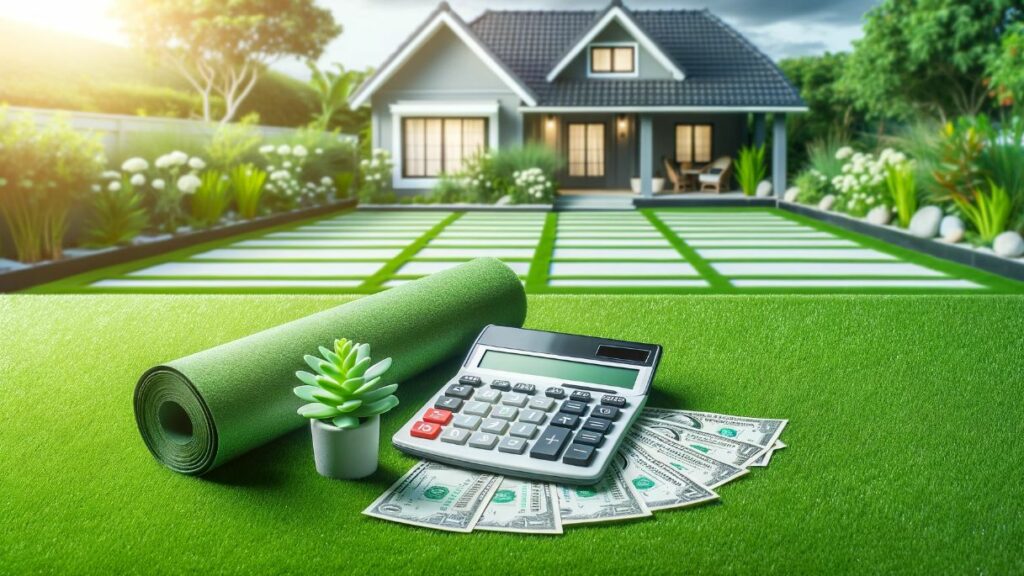
FAQ: Cost of Artificial Grass
How much does artificial grass cost per square foot?
The cost varies, but typically ranges from $5 to $20 per square foot, depending on the quality and type of artificial grass.
Are there additional costs involved in installing artificial grass?
Yes, additional costs can include ground preparation, installation accessories (like adhesives and infill), and optional features like padding or landscaping enhancements.
How does the cost of artificial grass compare to natural grass over time?
While the initial installation cost of artificial grass is higher, it becomes more cost-effective over time due to minimal maintenance and watering needs, compared to ongoing expenses for natural grass upkeep.
Does the size of the installation area affect the total cost?
Yes, larger areas require more materials and labor, which increases the overall cost. However, economies of scale may apply for very large installations.
Can I save money by installing artificial grass myself?
DIY installation can reduce costs, but professional installation is recommended for durability and appearance. Improper installation can lead to additional costs in the long run.
Are there long-term savings with artificial grass in terms of maintenance?
Yes, artificial grass significantly reduces long-term expenses like watering, mowing, fertilizing, and pest control, common with natural grass.
Is cheaper artificial grass a cost-effective choice?
Lower-cost options may save money upfront but may not be as durable or realistic-looking. Investing in higher-quality turf can be more cost-effective due to its longer lifespan and reduced maintenance needs.
Does artificial grass require professional maintenance services?
Professional maintenance is not typically necessary. Occasional cleaning and brushing are usually sufficient, which can be done by the homeowner.
What is the lifespan of artificial grass, and how does it impact cost?
Artificial grass can last 15-20 years, significantly longer than natural grass, which often requires re-turfing every 5-7 years. This extended lifespan and lower maintenance make it more cost-effective over time.
Are there financial benefits to using artificial grass in water-restricted areas?
Yes, in areas with water usage restrictions or high water costs, artificial grass can lead to substantial savings on water bills and potential penalties for excessive water use.
